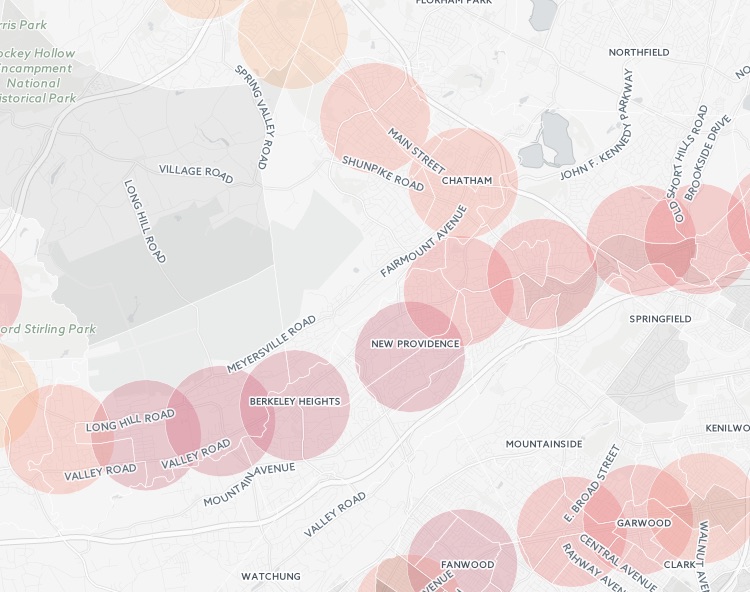State of Housing Near Transit
New Jersey already contains a dense network public transit infrastructure. There are 244 rail, light rail, or major bus stations in the state. About a third of New Jersey residence live within a half-mile of one of these transit stations. This large population near transit stations shows the importance of New Jersey’s current transit infrastructure, and the ability for transit improvements to have bigger impact for a large percentage of the state’s population.
The concentrated poverty in many of New Jersey’s inner-cities, and the lack of affordable housing options in “Areas of Opportunity,” mostly in New Jersey’s suburbs. The number of affordable units is particularly small near New Jersey’s transportation centers. Many transportation centers in suburban communities are surrounded by single-family housing that is often too expensive for low-income households. Where multi-family housing does exist near transit, it is often either unaffordable for low-income families, or located in neighborhoods with high poverty.
This mapping tool looks at multi-family housing in relation to family income in New Jersey. This mapping tool looks at multi-family housing in relation to family income in New Jersey. There are two areas of interest: New Jersey’s Gold Coast and Urban Essex County. Data points represent single-family housing rates within a mile of rail stations in the state. This is layered over the percentage of families living below the poverty line. There are three areas of interest: New Jersey’s Gold Coast , Urban Essex County, and Suburban New Jersey.
Findings
New Jersey’s Gold Coast shows low levels of single-family housing as well as low levels of poverty. This is not surprising considering the area’s dense and expensive housing stock. The majority of housing units in this area are unaffordable to low-income families despite the abundance multi-family units.

In Inner Essex County, shows moderate levels of single-family housing with areas of higher poverty near transit. Single-family housing does not utilize transportation centers as well as multi-family housing.

Suburban New Jersey shows a majority of single-family housing with low levels of poverty. Housing here is not does not utilize transportation centers. Additionally, housing is inaccessible to many, and thus poverty is almost non-existent.

These three examples illustrate the lack of affordable housing choices near transportation centers in New Jersey. Housing built to utilize nearby transportation is unaffordable. Areas with high levels of single-family housing are either in areas of concentrated poverty, or in the state’s wealthy suburbs.